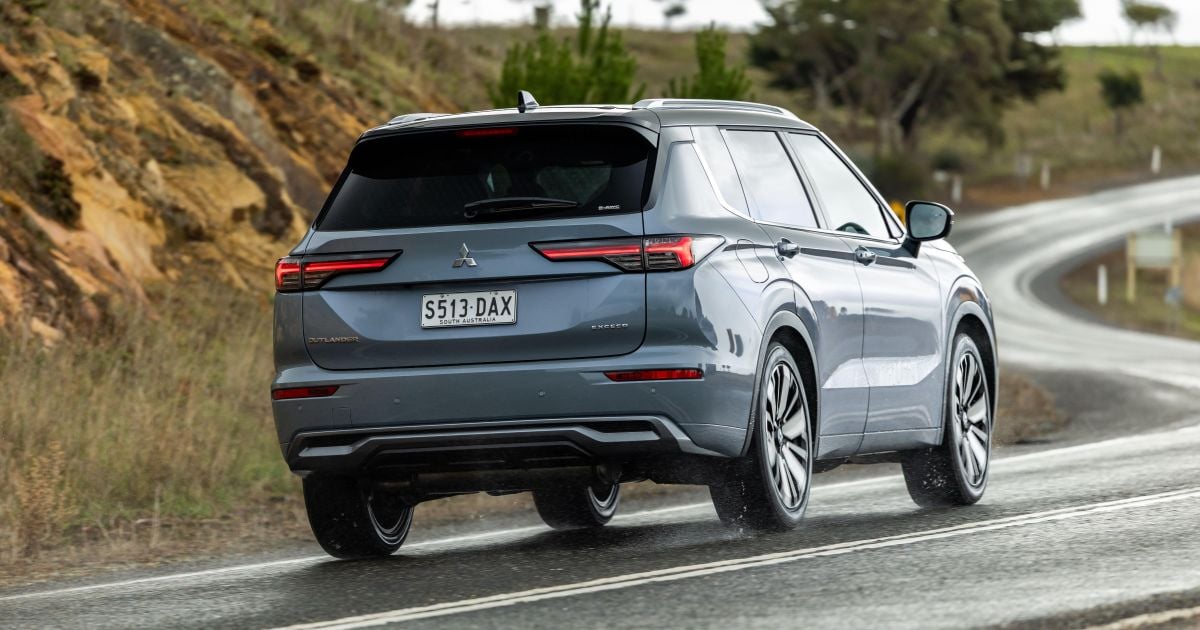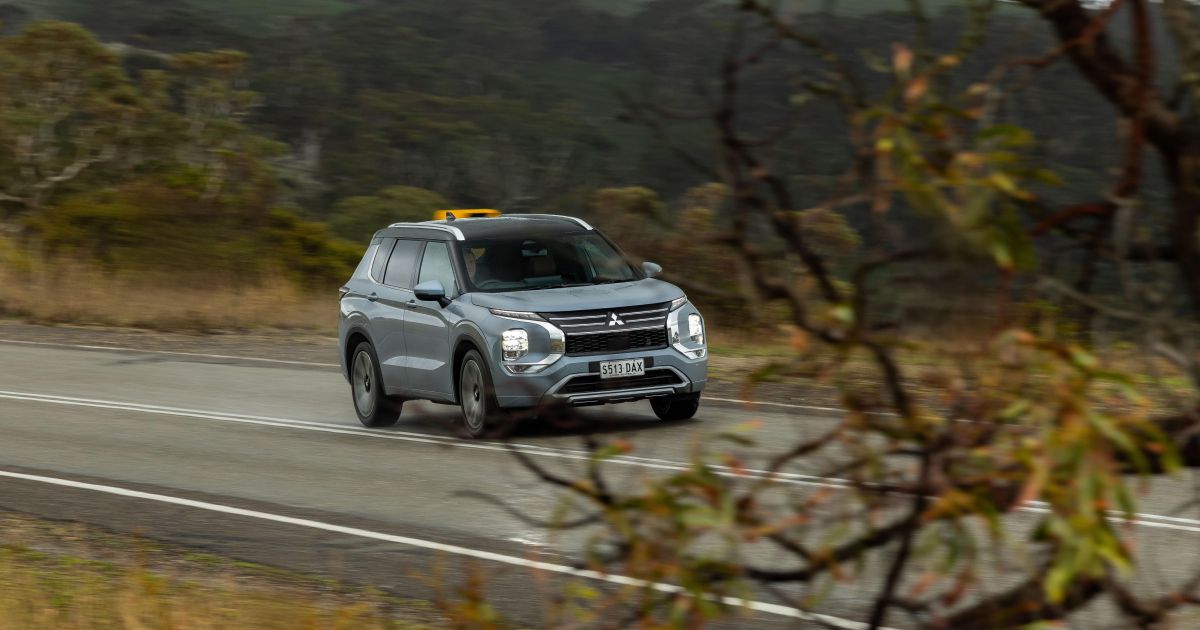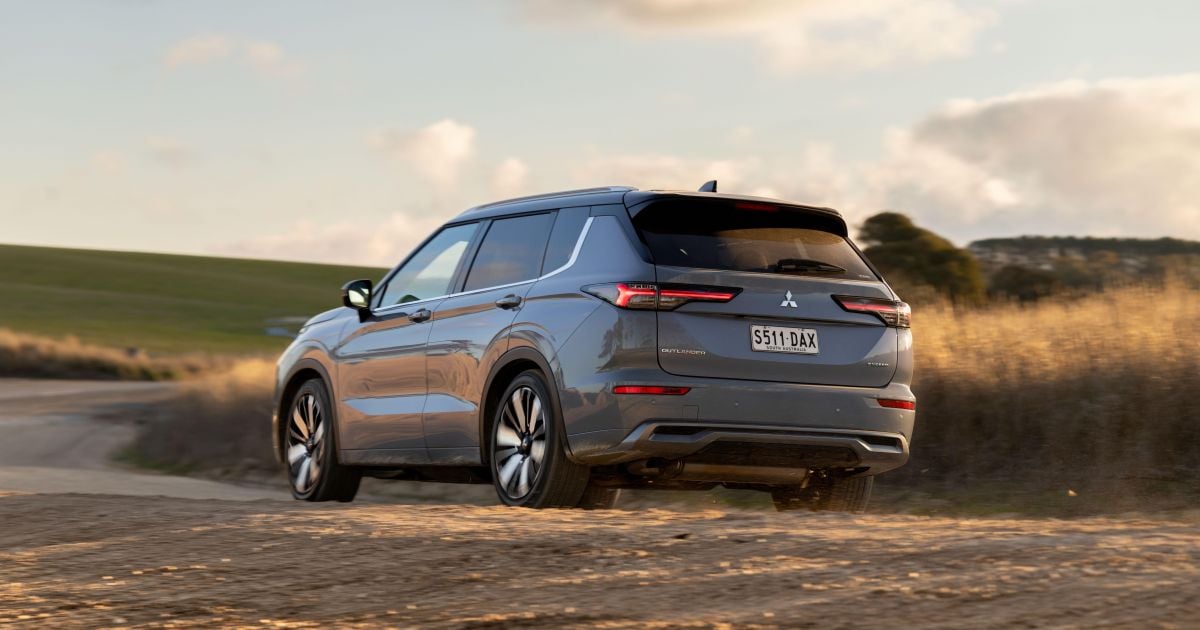Mitsubishi Australia launched its current-generation Outlander in 2021, but it has only just blessed its most popular model – and the nation’s third-best selling mid-size SUV – with a local chassis tune.
At the launch of the upgraded Outlander, the Japanese auto brand said the delay in undertaking its most comprehensive product development program since it ceased car manufacturing in Australia in March 2008 was due to recent global events and plenty of customer and media feedback.
Among a host of other equipment and detail updates, the headline act of the 2025 Outlander is a suspension and steering package developed in Australia, specifically on roads south of Adelaide, where previous Mitsubishi models including the Magna and 380 were also partly developed.
As you can read in our review, the result is a car that steers more precisely and rolls over less in bends, yet is more compliant over bumps and more stable in a straight line, while also being more refined inside thanks to reduced noise and vibration levels.
Mitsubishi Australia product manager Tony Dorrington said the global pandemic delayed local development of the Outlander, but also allowed more time for owner and press feedback of the pre-update model.
Hundreds of new car deals are available through CarExpert right now. Get the experts on your side and score a great deal. Browse now.
“If we think back to COVID times, a lot of the Outlander’s development was done during COVID. That really prevented that collaborative effort. Japanese [engineers] couldn’t travel here, we couldn’t travel to Japan,” he said. “What really prompted it was the feedback that we got from [media] and from our customers.”
The Outlander’s local chassis tune involves recalibrated electric power steering and revised suspension including smaller-diameter front anti-roll bars to suit the retuned steering, plus new front and rear shock absorbers, and different front and rear spring rates, in conjunction with increased cabin insulation and revised body materials and reinforcements to create a quieter and more comfortable cabin experience.
Mr Dorrington said Mitsubishi Australia’s work in developing the Outlander’s new steering and suspension setup had been well-received by its Japanese parent company, prompting its rollout in many other global markets.
“When we became a core market for [Mitsubishi Motors], they came here and did a lot of road surveys. Out of that, they acknowledged that developing a local tune for Outlander would be really beneficial for our customers,” he said.
“As I’m sure you know, Australia is probably the toughest proving ground in the world. In the end, [Mitsubishi] acknowledged that what we had done locally would be applicable for the rest of the world.
“They took cars to the US and Europe and got them to evaluate them, and they agreed.”
Mitsubishi’s local CEO Shaun Westcott said Australia’s roads are a perfect testing ground for new models, and a stretch of Inman Valley Road from Yankalilla to Victor Harbor had also been used to test previous Mitsubishi models like the South Australian-made 380 in the early 2000s.
“In fairness, and I don’t want to be disparaging about Australian roads, but they’re – and I don’t want to say they’re below world standards – they’re actually below world standards,” he said.
“The cars were typically developed for European, American markets, but once we had the car in-market, developed during COVID so limited options to test it in Australia, we identified through [initial feedback] where people picked up on some of the harshness that was coming through the suspension and things like that.”
Mr Westcott said the feedback from media and customers was relayed to the brand’s headquarters, which showed interest in why Australia’s conditions were unique, prompting a simple suggestion from the local division to “come and see”.
“That really started a significant development program to the point now that Japan has actually replicated an Australian road, they came and scanned a section of [Inman Valley Road], and rebuilt it at our Tokachi testing ground in Japan,” he added.
When asked about whether Australia would play a role in the development of future Mitsubishi models, product strategy and product relations general manager Bruce Hampel said the lessons learned from Outlander would be carried forward.
“What they’ve found… and the proof point of that is that they intended to do this as an Australian-only tune for Outlander but it ended up turning into the global tune,” he said.
“We’ve found that in other companies as well that if you get it right in Australia, it actually works quite well globally.
“So as they’ve now learnt that and they’re embracing it more and more, getting a deeper understanding of the Australian market conditions and the customer preferences, we’re expanding that into all the product lines going forward.”
The next Mitsubishi model to feature an Australian-developed chassis tune will be the Outlander PHEV, which is due to launch locally in September.
MORE: 2025 Mitsubishi Outlander to bring Australian chassis tune
MORE: Everything Mitsubishi




